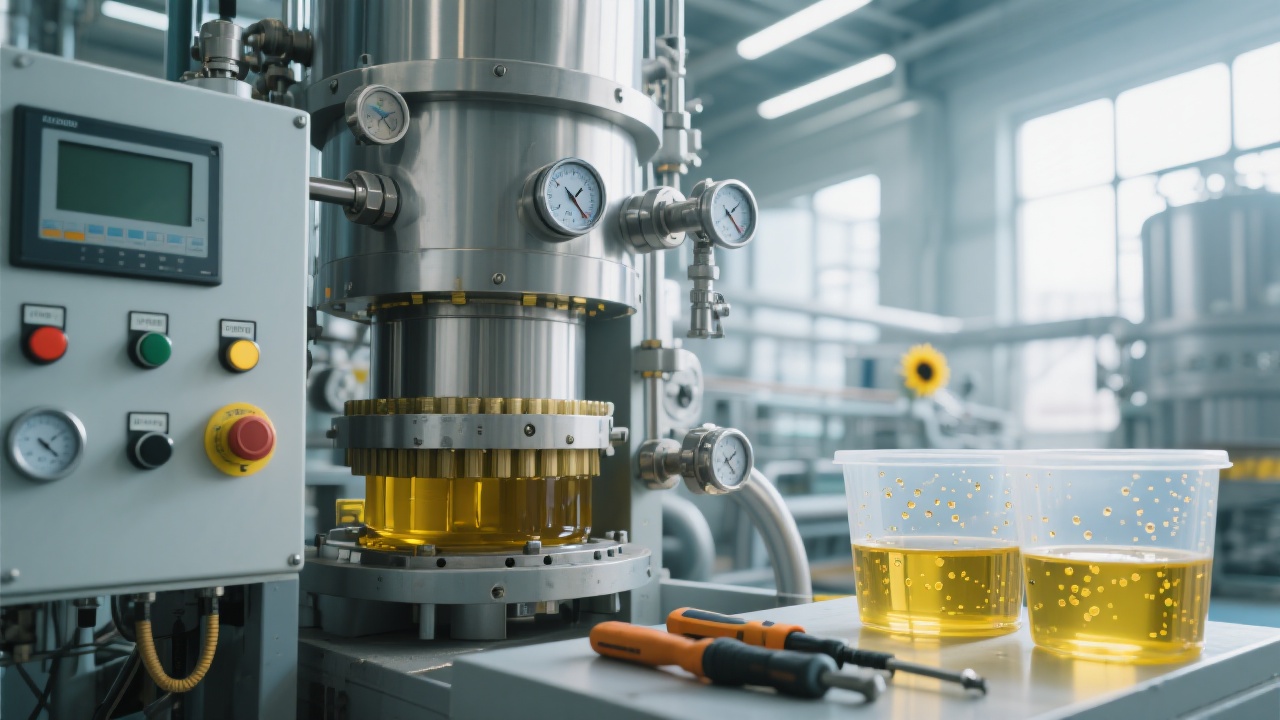
In recent years, the soybean oil processing industry has witnessed remarkable technological advancements. High - efficiency solvent extraction has become a cornerstone of modern soybean oil production. This method can extract up to 98% of the oil from soybeans, significantly improving the oil yield compared to traditional methods. For example, with advanced solvent extraction equipment, the Oil Extraction rate can reach 20% - 22% from soybeans, while traditional methods usually achieve only 16% - 18%.
Automation control systems have also been widely applied. They can precisely monitor and adjust every step of the production process, from raw material input to finished product output. Green deodorization technology is another highlight. It uses natural substances and mild conditions to remove unpleasant odors from soybean oil, making the oil more palatable and in line with consumer preferences.

These technological improvements have a profound impact on the key indicators of refined soybean oil. In terms of acid value, advanced technologies can reduce it to 0.5 or even lower. A lower acid value means better oil quality and longer shelf - life. For example, in a modern soybean oil factory, through advanced refining processes, the acid value of the final product can be stably maintained at around 0.3, which is far below the national standard of 1.0.
Regarding color, new refining processes can make the soybean oil clearer and more transparent. The Lovibond color value can be controlled within a very low range, usually between 1.0 - 1.5 red and 10 - 15 yellow, which is more in line with the international market's aesthetic requirements for edible oils. In terms of odor, the green deodorization technology mentioned above can effectively remove fishy and other unpleasant odors, leaving only a natural and mild fragrance. Oxidation stability is also greatly enhanced. By adding natural antioxidants and optimizing the refining process, the induction period of soybean oil can be extended from 6 - 8 hours to more than 12 hours, which is crucial for long - distance transportation and long - term storage.
Many export - oriented soybean oil factories have upgraded their equipment to meet the strict certification requirements of the European, American, and Southeast Asian markets. For instance, a soybean oil factory in China aimed at the European market upgraded its refining equipment and introduced a fully automated quality control system. After the upgrade, it successfully obtained the ISO 22000 (Food Safety Management System) and EU food safety certification. The factory's exports to Europe increased by 30% within one year.
In the Southeast Asian market, which has high requirements for the freshness and taste of soybean oil, another factory upgraded its green deodorization and rapid cooling equipment. As a result, it passed the Halal certification and saw a significant increase in market share in Muslim - majority countries in Southeast Asia.
Technological progress not only improves the quality of soybean oil but also enhances the value of by - products. In the production process, the quality of soybean meal has been improved due to more precise control of the extraction process. High - quality soybean meal can be used as high - grade animal feed, and its protein content can reach more than 46%, which is very popular in the international feed market.
Lecithin, another by - product, has also gained more attention. Advanced separation and purification technologies can produce high - purity lecithin, which is widely used in the food, pharmaceutical, and cosmetic industries. The value of lecithin has increased by 20% - 30% in the international market in recent years, bringing additional economic benefits to soybean oil factories.

The future of the soybean oil export industry lies in digital management and sustainable processes. Digital management systems can collect and analyze data from every production link in real - time, enabling factories to optimize production plans, reduce costs, and improve product quality. Sustainable processes, such as using renewable energy sources in production and reducing waste emissions, will not only help protect the environment but also enhance the brand image of soybean oil products in the international market.
By embracing these trends, soybean oil factories can make every drop of oil have an international passport, meeting the diverse needs of global consumers and winning more market shares. If you want to learn more about how to upgrade your soybean oil production technology to enhance export competitiveness, click here.
Do you have any questions or experiences related to soybean oil production technology and export? Share your thoughts and let's explore more solutions together!


